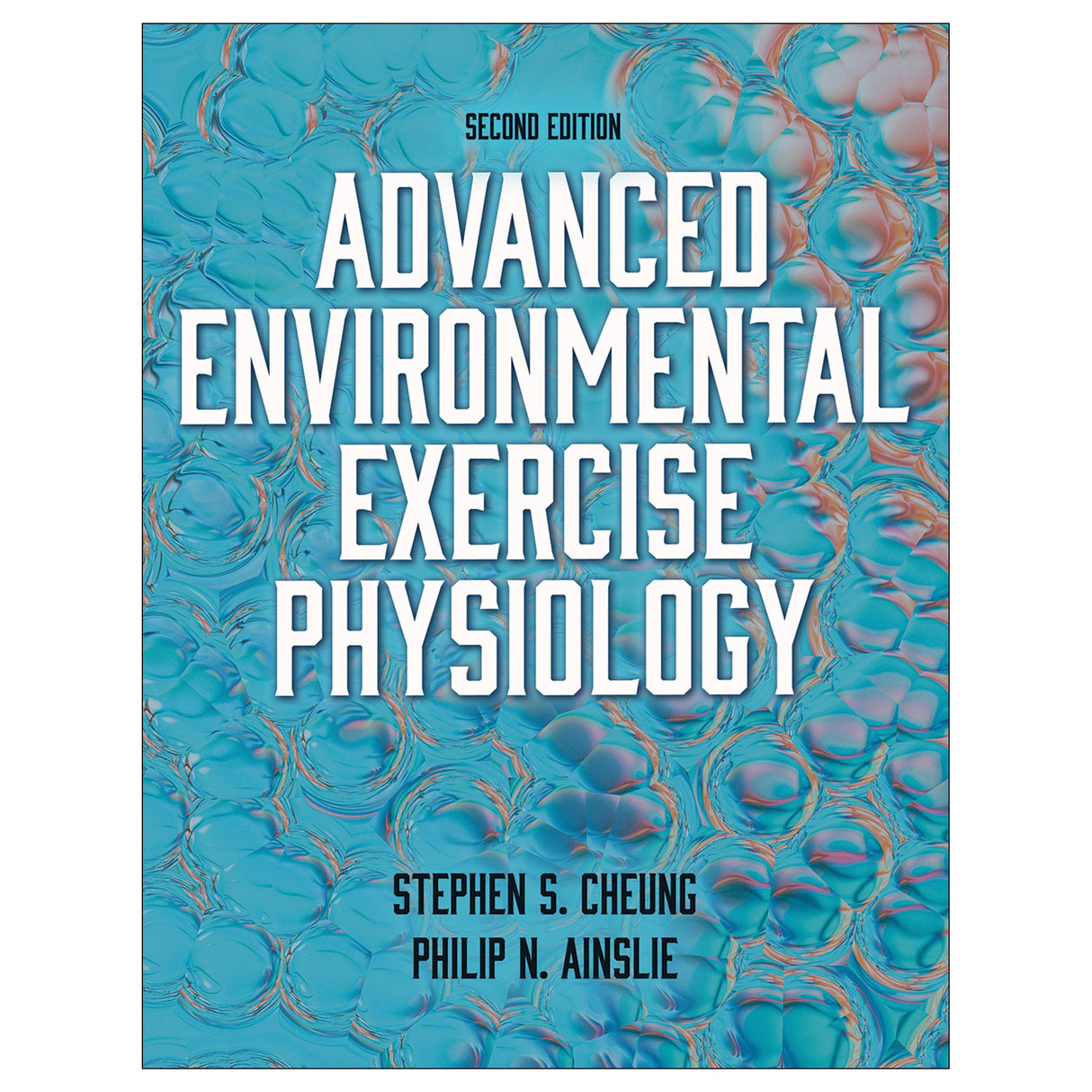Advanced Environmental Exercise Physiology 2nd Edition epub
Author: Stephen S. Cheung, Philip Ainslie
$90.00 USD
Access Duration: 10 Years
Among the issues explored in this text are the effects of heat, hydration, and cold in the thermal environment; diving, altitude training, and other pressure effects on the human system; and the influences that pollution and air quality have on exercise. The text also explores the microgravity (space) environment and chronobiological rhythms. The second edition includes new chapters on heat adaptation and therapy, breath-hold diving, physiological adjustments to acute hypoxia, sex differences in environmental response, and cross-adaptation.
Through Advanced Environmental Exercise Physiology, Second Edition, readers will learn the following:
- The initial physiological responses upon exposure to an environment that a person is not adapted to
- How the body adapts to repeated exposure to an environment
- How various environments affect the ability to exercise and work
- Individual variability in response to stressful environments
- Countermeasures that people can take to minimize the impact of environmental stressors
Advanced Environmental Exercise Physiology, Second Edition, contains twice the number of figures and illustrations from the previous edition to offer better visualization and explanation of the content. New learning aids include chapter objectives, chapter summaries, and review questions to enhance reader comprehension. Sidebars throughout the text highlight lively areas of current research and debate to stimulate further investigation.
Supported by evidence-based information and numerous references, Advanced Environmental Exercise Physiology, Second Edition, addresses the primary environmental factors affecting people when they are working, exercising, and competing in sport. By linking research with recommendations for real-world situations, this text serves as an invaluable resource for students and professionals alike.
Audience
Text for graduate-level and upper-level undergraduate courses in exercise physiology and exercise science; reference for exercise science professionals and sports medicine specialists.Heat Balance Equation
Models of Thermoregulatory Control
Thermal Stress Scales
Summary
Chapter 2. Heat Stress
The Problem With Heat
Mechanisms of Hyperthermia
Thermal Perception and Exercise
Individual Variability
Cooling Strategies
Summary
Chapter 3. Heat Adaptation
Heat Adaptation
Heat Therapy
Summary
Chapter 4. Hydration Strategies for Exercise
Hydration Terminology
Impact of Fluid Balance on Performance
Developing a Hydration Strategy
Hydration Strategies Following Exercise
Summary
Chapter 5. Cold Air Exposure
Hypothermia
Physiological Responses to Cold Exposure
Exercise in the Cold
Cold Injuries to the Extremities
Thermal Response in the Extremities
Summary
Chapter 6. Cold Water Immersion
Phase 1 Immersion and Cold Shock
Phase 2 Muscle Failure
Phase 3 Hypothermia
Phase 4 Postrescue Collapse
Summary
Chapter 7. Breath-Hold Diving
Gas Laws
Disciplines of Apnea Diving
Static Apnea
Dynamic Apnea
Depth
Training Apnea Diving
Indigenous Diving Populations
Medical Consequences of Apnea Diving
Summary
Chapter 8. Diving and Hyperbaric Physiology
Physics of Diving
Diving Systems
Decompression Sickness
Inert Gas Narcosis
Saturation Diving
Summary
Chapter 9. Physiological Adjustments to Acute Hypoxia
Normoxia and Hypoxia
Physiological Consequences of Exposure to Acute Hypoxia
Neurological Effects of Acute Hypoxia
Fatigue and Hypoxia
Clinical Consequences of Acute Hypoxia
Summary
Chapter 10. High-Altitude Physiology
Acclimatization
High Altitude and the Oxygen Cascade
Cardiovascular Response
High-Altitude Illnesses
Hemoglobin and Oxygen Transport
American Medical Research Expedition to Everest
Metabolism and Body Composition
Adaptation to High Altitude
Summary
Chapter 11. Altitude Training and Performance
Living-Training Hypoxic Models
Genetic Basis of Altitude Performance
Hyperoxia
Considerations in Applying Altitude Training
Summary
Chapter 12. Microgravity and Spaceflight
Physiological Responses to Microgravity
Microgravity Simulations
Spaceflight Countermeasures
Extravehicular Activity Physiology
Spacesuit Design
Summary
Chapter 13. Exercise in Polluted Environments
Major Pollutants
Air Quality Indices
Pollution Effects on Exercise
Managing Air Pollution for Athletes
Summary
Chapter 14. Chronobiology
Nomenclature
Circadian Rhythms and the Sleep–Wake Cycle
Sleep
Sleep Deprivation
Transmeridian Travel Fatigue and Jet Lag
Summary
Chapter 15. Cross-Adaptation
Nomenclature
Cold and Hypoxia Cross-Acclimatization
Heat and Hypoxia Cross-Acclimatization
Other Cross-Adaptation Themes
Summary
Chapter 16. Individual Variability: Sex and Age
Sex Differences in Thermoregulation
Sex Differences in High-Altitude Physiology
Children
Aging
Aerobic Fitness
Summary
—Alex Hutchinson, Science Journalist and Author of Endure: Mind, Body, and the Curiously Elastic Limits of Human Performance
“The authors have successfully collated the most important aspects of various environmental exercise physiology and positioned it into one book. This was done through appropriate choice of information to cover, while also using exceptionally good figures/images throughout the book to help readers gain an understanding of the complex interplay at work during environmental exercise physiology.”
—© Doody’s Review Service, 2023, Cody Dulaney, Kent State University (4-star review)
The physical effects of sleep deprivation
Understand the physics of SCUBA diving
All ancillaries are free to adopting instructors through HKPropel.
Test package. Contains more than 370 questions in true-false, fill-in-the-blank, essay and short-answer, and multiple-choice formats.
Image bank. Includes most of the figures and tables from the text, sorted by chapter. These can be used in developing a customized presentation based on specific course requirements.





